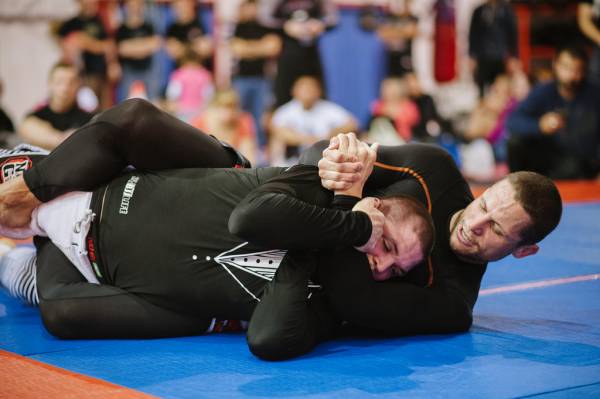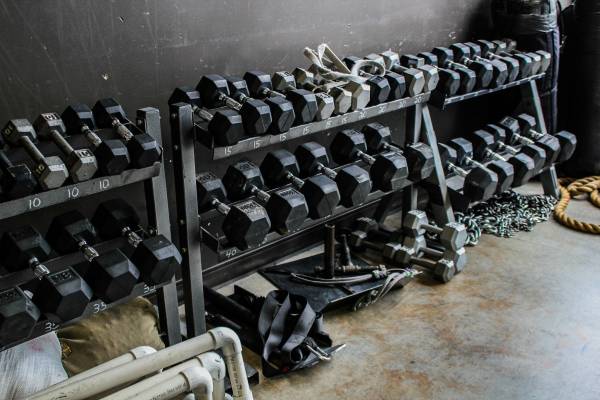Last weekend, the International Brazilian Jiu Jitsu Federation (IBJJF) hosted the Chicago Open. The tournament was divided into two days of both gi and no-gi competition. One of the benefits of the IBJJF is the large number of divisions. A competitor can compete in a bracket based on age, weight, belt, and gender.
While the level of competition gets better each year, one thing I noticed more this year than in the past is the growth of the master divisions. According to the IBJJF, a master athlete is anyone over thirty years of age.
The large number of master level competitors got me thinking about longevity in BJJ. When I see someone competing who is over thirty, I always think, “What is that person doing that he or she is able to train for that long?” Actually, not only train for that length of time, but still have the physical capability to compete at a high level.
Longevity in BJJ is overlooked. Most of the attention is given to the young competitors trying to make a name for themselves. I argue that the competitors we should all pay attention to are the older, more experienced black belts. What have they done that helps them to train so successfully for so long?
Learn a BJJ Style for Longevity
In Brazilian Jiu Jitsu, styles can vary depending on the school, the instructor, and the student’s body type. It is ridiculous to think that someone tall and lanky can do an armbar the same way as someone who is short and stocky, right? But the fundamentals are the same, though some adjustments are required based on body type. Same with the school and instructor. You may walk into three different schools and learn three different ways to do an armbar from closed guard. Each way is slightly different, but the end result is the same – my opponent ends up in an armbar.
“If your goal is to have fun and learn something new every time you train, then you will be training for a long time.“
There are specific grips or hip movements that make up the fundamental principles of an armbar. The competitors who have been around the longest share similarities. They may compete for different teams and be in different weight classes, but what they all have in common is a simple game that focuses less on athletic attributes and more on technique.
As we get older, a BJJ style that relies on athleticism is not going to be as effective for us. Steve Maxwell, Saulo Ribeiro, Wellington Dias, Renato Tavares, and Royler Gracie are all very technical and play a simple game. The key to longevity is having a game you can execute at any age.
Tap Early, Not Late
Injuries are part of the game. Some injuries seem to pop up out of nowhere. I have seen people roll an ankle just by warming up. But injuries from not tapping or tapping late are avoidable.
No one likes to lose, but sometimes losing is the best thing. I see it all the time – a student gets caught in a submission that appears to be secure. Instead of tapping right away, he or she waits and tries everything possible to muscle out of that submission. When the student finally does tap, it is too late. Most of the time, the damage is done before the pain occurs. The younger athlete may be able to return to the mats quickly after an injury, but the older athlete is going to need more time.

Tapping to anyone is not a sign of defeat. When you tap, you get another chance to train. When I first started training, one of the higher belts told me, “You tap, you can train tomorrow. You don’t tap, you can train in six months.” It does not matter what rank someone is – if you are caught in a submission, tap, learn from it, and start again.
Pick the Right Training Partner
Staying on the mats requires the right training partners at the right time. Everyone has days where they feel a little off or beat up from a previous training session. As an older athlete, this is not the day to choose the new, younger student who is a former wrestler as your sparring partner.
Being selective about your training partner has nothing to do with skill. It has to do with safety. With the right partner, it is possible to roll safely, even if you are not feeling your best. When you are having one of those days, tell your instructor how you are feeling. That way, your instructor knows to only partner you with other students that he or she feels are safe for you. If your academy allows you to pick your own training partners, then the responsibility falls on you. Sometimes, the best thing you can say when someone asks you to roll is, “No.”
Supplemental Training
There is nothing that can replace BJJ training. Supplemental training is not going to make you better at BJJ. The focus of supplemental training is to repair the body from the damage it takes during BJJ and other activities. Supplemental training should balance the body in order to protect it from developing muscular imbalances and compensation patterns.
If you are spending more than three days a week on the mats, two to three days of supplemental training is plenty. Supplemental training should include strength training and mobility. You get plenty of conditioning during BJJ sparring.

Have Fun and Learn
Last but not least, have fun when you train. Training should be fun, even during the times when it seems like everything is going wrong. It takes a special person to go home with a smile on his or her face after having one of those days where you get your butt kicked. What is more important is that you leave with a smile on your face and feel excited for the next time you can get back on the mats.
“[W]e should all pay attention to are the older, more experienced black belts. What have they done that helps them to train so successfully for so long?“
If your goal is to have fun and learn something new every time you train, then you will be training for a long time. If your goal is to win every session, the chances of a long BJJ career are slim. That mentality is the one that makes you hold on and tap after it is too late or choose to train with someone you shouldn’t.
Athleticism for a Lifetime
Do you want to train BJJ for a few years or a lifetime? That is the question you need to ask yourself. Every decision you make will take you closer to or further from that goal.
If your goal is to train for a lifetime, simplify your game, tap early, pick the right partners, add in supplemental training, and have fun.
Check out these related articles:
- How Long Do You Want to Do BJJ? Training for Longevity
- Lineage and Longevity With Dan John
- Use Play to Become Fitter and Stronger for Longer
- What’s New On Breaking Muscle Today
Photos 1 and 2 couresy of David Brown.
Photo 3 courtesy of Shannon Khoury.






